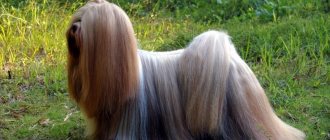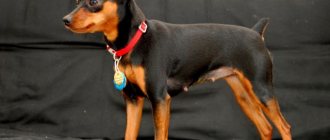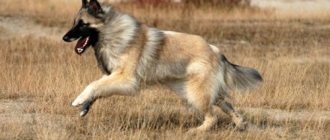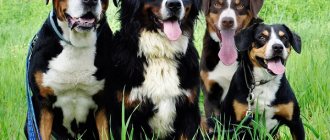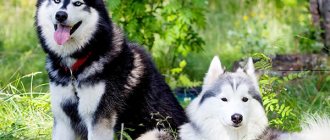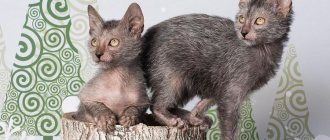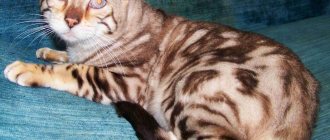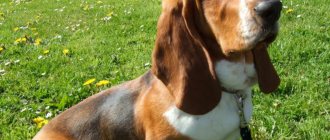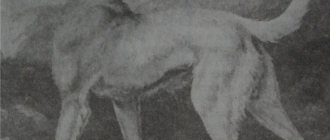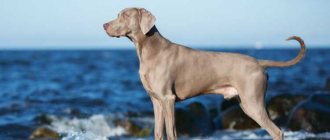The Lhaso Apso is a relatively small but quite robust dog with a long and thick double coat. This breed is known to be joyful and playful, as well as independent and mischievous.
What is the Lhasa Apso known for?
They have a thousand-year history as a guard dog. This breed is also used as guide dogs for people with hearing loss.
Breed traits
Breed traits (on a 5-point scale)
| Lhasa apso | |||
| Activity | in the house | 3.1 | |
| on the street | 3.1 | ||
| Obedience | training | 2.7 | |
| strangers | 3.2 | ||
| Domination | in family | 3.5 | |
| over dogs | 3.7 | ||
| Defending your territory | from people | 4.1 | |
| from dogs | 4.2 | ||
| Sociability | in family | 4.1 | |
| with strangers | 2.3 | ||
| with dogs | 2.7 | ||
| Concentration | in family | 2.4 | |
| in front of strangers | 3.1 | ||
| with dogs | 2.8 | ||
| Aggressiveness | in family | 3.2 | |
| to strangers | 3.6 | ||
| to the dogs | 3.4 | ||
| to cats | 2.9 | ||
| Family behavior | calmness | 3 | |
| demand for affection | 3.6 | ||
| excitability | 4.5 | ||
| playfulness | 3.5 | ||
| excessive barking | 3.4 | ||
| behavioral breakdowns | 2.2 | ||
| Tolerance for children | up to 4 years | 2.2 | |
| over 4 years old | 2.8 | ||
| Institutional use | watchman | 4.4 | |
| bodyguard | 2.8 | ||
This breed is often compared to the following dog breeds: Shih Tzu, Tibetan Terrier, Bichon Frize, Japanese Chin, Pembroke Welsh Corgi.
The photo shows what a Lhasa Apso looks like:
Characteristics of Lhaso Apso
| Attachment level | High |
| Friendliness | Average |
| Child Friendly | Average |
| Loyalty to other pets | Average |
| Exercise needs | Average |
| Playfulness | High |
| Energy level | Average |
| Learning ability | Average |
| Intelligence | High |
| Tendency to bark | High |
| Shedding amount | Average |
General characteristics of the Lhasa Apso breed
There are two versions why the breed is called that. According to one of them, “Lhasa Apso” is translated literally. Lhasa is the capital of Tibet, “apso” means “bearded”. The Lhasa Apso is a bearded dog from Tibet. According to another version, the name is associated with the use of these dogs in ancient times. They helped herd goats, and sometimes the name of the breed is translated as “a dog that looks like a goat.”
| Options | Characteristic |
| Name | Lhasa apso |
| a country | Tibet |
| breed group | ornamental and companion dogs |
| life expectancy | 12-14 years old |
| height | 20-25 cm |
| weight | 5-7 kg |
| aggression | No |
| activity | average |
| intelligence | standard |
| care | complex, requires grooming, special haircut |
pros
The small Lhasa Apso dog is ideal for keeping in a city apartment. This is an excellent companion that gets along well with any owner. He will be happy to accompany his owner on a walk; he does not require much physical activity. Therefore, the breed is suitable for older people and can be used as a guide dog for the disabled. These dogs have several more advantages:
- smart, quick-witted, well trained;
- friendly, not aggressive;
- cheerful, cheerful;
- you can take them with you on a trip;
- have well-developed security qualities;
- have an attractive appearance;
- the wool does not smell like dog and does not cause allergies;
- have a strong physique and good health.
Minuses
It is not recommended for families with children to have a Lhasa Apso; these dogs do not tolerate disrespect and are big owners. If a child is rude or tries to take away a toy, the dog may bite. Representatives of this breed have several more disadvantages:
- requires complex coat care;
- have an independent and independent character;
- prone to dominance;
- do not tolerate loneliness well;
- bark a lot and loudly;
- can conflict with other dogs, get into fights even with large dogs.
Dog kennel Lidgers Crown. Jack Russell Terrier, Lhasa Apso
| Description: | We specialize in the Jack Russell Terrier and Lhasa Apso breeds: - they get along well with adults and children, quickly adapt to new conditions, they are genetically free of aggression towards people, they are well trained, wonderful hunters, companion dogs, and actively participate in life person. We get a huge boost of energy and positive emotions from communicating with our pets! We actively participate in exhibitions and competitions. All our dogs are socialized and we love them. |
| Contacts: | Stanislava, tel.*(916)604-11-05 |
History of the origin of the breed
The Lhasa Apso breed is quite ancient. Such dogs lived in Tibet more than 4,000 years ago. Genetically they are close to wolves and southern shepherds, from which they took independence, fearlessness and the desire for leadership. In Tibet, the breed was called apso seng kai, which translates as “barking lion guard dog.” Many researchers note that it was from it that some other breeds originated: Tibetan terriers, Shih Tzus, Pekingese.
These small dogs were bred in Tibetan monasteries and were considered sacred. They guarded the chambers of the Dalai Lamas. According to local legend, they were inhabited by the souls of their deceased owners. Therefore, the monks considered them talismans that brought good luck. It was forbidden to take dogs outside the country. Only sometimes did the Dalai Lama give them to noble people from China.
In other countries, they learned about the Lhasa Apso at the turn of the 19th-20th centuries. Colonel Bailey brought several specimens to Britain. These dogs began to be bred, and a standard was developed in the 30s. Although at first they were classified as Tibetan terriers, and in America - as Shih Tzus. Only in the late 60s of the 20th century these dogs were identified as a separate breed and officially recognized. She was named Lhasa Apso.
The breed appeared in Russia at the beginning of the 20th century. But it still remains little known and is rare. Although in other countries it is among the top 30 most popular breeds.
How not to make a mistake in choosing
As with any breed, if you think the Lhasa Apso is the right dog for you, be sure to learn more about it before purchasing one. Talk to other Lhasa owners and reputable breeders to find out more information.
If you're interested in similar breeds, check out their pros and cons to help you choose the right pet for you:
Silky Terrier
Maltese
Shih Tzu.
Appearance of a Lhasa Apso
This is a small decorative breed. The average height of a Lhasa Apso is 25 cm, weight is 5-7 kg, females are slightly smaller than males. The appearance of these dogs was formed without the help of breeders. When creating the standard, the breed characteristics were simply described. Tibetan Apsos have a harmonious build and long, thick coat that flows beautifully along the body and flutters in the wind. It hides the proportions of the body; compliance with the standard can only be seen in a dog with a haircut.
Head
The head is proportional to the body. Covered with long hair, which forms a characteristic bang, mustache and goatee. The skull is quite narrow, the forehead is convex. The stop is shallow, but clearly pronounced. The muzzle is wide, according to the standard its length should be about 4 cm. The bridge of the nose is straight, the lobe is large, always black. The lower jaw protrudes slightly forward and is quite wide. The mouth is rectangular, the bite is reverse or straight.
The eyes are round, medium size, dark. Set straight and wide enough, not convex. The eyelids are black, close-fitting, the whites are not visible. The look is smart and cheerful. The ears are hanging, long, low set.
Frame
The neck is muscular, of medium length, beautifully arched. The body is compact, proportionally folded, rectangular in format. The back is straight, the loin is slightly convex, the croup is narrow and sloping. The chest is deep, the ribs are convex, the stomach is moderately tucked. The tail is set high as standard and always carried above the back. The tip is bent with a hook, but the tail does not curl into a ring.
Limbs
The limbs are smooth and muscular. They are quite short, completely hidden by fur. The hock joints are well defined and parallel. The paws are rounded, the toes are gathered into a ball. The Tibetan Apso moves easily and freely. The gait is confident, without unsteadiness.
Wool
The thick and double coat of the Lhasa Apso was formed under the influence of the harsh weather conditions of Tibet. The outer hair is quite hard, straight, and heavy. It is long, reaches 15 cm. It abundantly covers the entire body, falls almost to the ground, parting along the back. The undercoat is soft, not very dense. Retains heat well and protects the body from moisture.
Colors
The standard allows any color of the Lhasa Apso. There are a few of the most common:
- golden;
- black;
- white;
- grey;
- sand;
- honey;
- brown.
The color can combine two colors: black and white, brown and white, tortoiseshell. With a solid color, the ears and beard may be darker.
Photos complement the description of the appearance:
Comparison with similar breeds
The Lhasa Apso is closest in appearance to the Shih Tzu. In the USA, they were previously even considered the same breed. Researchers note that the Shih Tzu was bred from the Lhasa Apso. Compared to their ancestors, they are smaller. The Shih Tzu's coat is long, slightly wavy, and is usually collected in a bun on the head. Unlike the Lhasa Apso, their muzzle is shorter, upturned, and their eyes are larger. They also differ in character. Shih Tzus are more like decorative dogs: affectionate, friendly, welcoming to everyone, relaxed.
When comparing the Lhasa Apso with similar small breeds, the following differences can be noted:
- lapdogs have a softer coat, a scissor bite, and a longer muzzle;
- small lion dogs are taller, they have no undercoat, their ears and muzzle are longer;
- Tibetan Terriers are larger in size and have slightly shorter coats.
Character traits
Unlike other decorative dogs, the Lhasa Apso will not behave like a toy. By character, representatives of the breed are closer to shepherds. They are called "big dogs in a small body."
Despite their small stature, representatives of the breed are good watchdogs. They have a pronounced territorial instinct. No one will pass unnoticed into the territory or into the house. Tibetan Apsos are suspicious of strangers and wary of everyone except their owners. They are fearless as they consider themselves big dogs. Loud barking warns of the approach of strangers.
Lhasa Apso become very attached to their owner and are ready to follow him on his heels and accompany him on any walks. They like to lie at their feet or sit on their laps. But these dogs are sensitive; if a person is not interested in communication, they will not pester. They are loyal and affectionate, attached to all family members and ready to protect them. Although there is one owner who was able to gain authority. They get very bored when they are apart and may even get sick. Representatives of this breed do not tolerate familiarity and love to be the center of attention and be praised.
These dogs cannot find a common language with small children and often conflict over toys. Although if the child does not offend the dog and treats him with respect, they will become friends. They communicate with teenagers as equals and do not like to obey them. Lhsa Apsos do not get along very well with other pets. Because of their desire for leadership, small pets are suppressed, they are always shown that they are more important. They are jealous and touchy. And because of their possessive instinct, they often conflict with large dogs.
Key character traits of the Lhasa Apso:
- vigilant;
- cheerful;
- self-confident;
- sociable;
- independent;
- friendly;
- balanced;
- devotees;
- stubborn;
- fearless.
Education and training
Lhasa Apsos are smart and intelligent, but they are difficult to train. They tend to dominate and are very independent, so they will obey only an authoritative owner with a strong character. This dog needs to be trained and socialized from an early age. If you don’t immediately instill rules of behavior, she will grow up impudent, playful, and spoiled.
You need to communicate with the puppy in a firm, even voice. It is recommended to avoid yelling and physical punishment. Representatives of this breed do not tolerate humiliation and you can completely lose their trust. But you need to immediately accustom the puppy to its name, place, toilet, and rules of behavior. It is important to stop any attempts to bite or snap at the owner, not to indulge the whims and not to pamper.
Training with your Tibetan Apso should be regular, short and varied. The pet needs to be captivated and interested. Present him with only achievable demands; if he understands that the command may not be fulfilled, he will become uncontrollable. During training, it is recommended to use positive reinforcement more often: affection, praise. You should not overuse treats; these dogs are prone to weight gain.
Maintenance and care
The Lhasa Apso is perfect for apartment living. You need to equip your dog with a cozy bed or house. She should have her own bowl and as many toys as possible. It is necessary to walk 2-3 times a day, although walks can be short - 20 minutes. These dogs do not require much physical activity. It is recommended to teach them to use a litter tray or diaper at home, as they cannot tolerate it for long.
Representatives of this breed may have breathing problems, so it is better to use a harness instead of a collar for walking. It is also recommended to purchase waterproof overalls so as not to wash your dog after a walk in the slush. Also, Tibetan apsos do not tolerate heat well; in summer it is better to take them outside early in the morning and in the evening.
Grooming
Lhasa Apsos are representatives of a decorative dog breed. Therefore, they require careful and regular grooming. She is long and sheds heavily. You need to comb it every day, better even 2-3 times a day. For this purpose, combs with fine and rare teeth, brushes, and silicone gloves are used. It is recommended to part the hair in the middle of the back. To prevent the fur on the face from getting dirty, it is collected with rubber bands.
You can bathe your Tibetan Apso as needed. Once a month is usually recommended, but whites can be treated more often. Just be sure to use special shampoo for long hair, balms, and conditioners.
If necessary, get a haircut. It is easier to care for a dog with a haircut; it is enough to brush it 3 times a week. It’s easier to keep clean, and in the summer your pet won’t be so hot. It is especially important to trim the hairs between the toes, under the tail. The length of the fur on the sides and belly is trimmed so that it does not touch the ground. It is also recommended to shorten your bangs or collect them in several ponytails.
Some owners cut their pet short, like a puppy. But such haircuts are not recommended for exhibition representatives of the breed, since a dog with a haircut looks more like a lapdog than a Tibetan apso.
Mandatory grooming procedures also include:
- examine your eyes every day, remove secretions to prevent the formation of tear tracks on the fur, use special drops;
- Clean your ears with veterinary lotion 1-2 times a week;
- After each walk, wash your paws and pick up any wool debris;
- after eating, wipe your beard and mustache with a damp cloth;
- Trim nails 1-2 times a month;
- Brush your teeth a couple of times a week.
Nutrition
You can feed your Lhaso Apso with both natural food and high-quality dry food. In the second case, you need to choose premium or super-premium options. They must contain all the nutrients the animal needs.
When choosing a natural diet, at least half of the diet should be meat. Sometimes it can be replaced with offal or sea fish. Meat products are mixed with cereals and vegetables. It is useful to give cartilage, egg yolk, vegetable oil, and fermented milk products. Be sure to add vitamin and mineral complexes to your food for healthy bones and coat.
You should not give your pet food from the human table, bones, or sweets. Confectionery products, legumes, fatty and spicy foods are contraindicated.
Health
The average lifespan of a Lhasa Apso is 12-14 years. With proper care, they can live up to 18-20 years. Representatives of the breed have fairly good health. Only sometimes the following diseases occur:
- allergy;
- eye diseases;
- dislocation of the kneecap;
- renal hypoplasia;
- joint dysplasia;
- indigestion;
- urolithiasis disease.
Buying puppies
When choosing a pet, you need to decide for what purpose it is needed. Typically, there are three options:
- as a home companion;
- for breeding;
- to participate in exhibitions.
The answer to this question will determine the class and, accordingly, the cost of the dog. It’s also a good idea to immediately decide on the gender of your future pet.
Lhasa girls have a softer and more flexible character. Males look more impressive than females and shed less.
Small apsos are similar to puppies of other dogs, which may not always be purebred. Therefore, in order not to buy a “pig in a poke,” it is better to contact a breeding nursery that has a good reputation. Before purchasing, it is recommended to examine not only the puppy itself, but also its parents, as well as the place and conditions in which it was kept.
When buying a Lhasa Apso, you should pay attention to the following points:
- the breeder must always answer any questions about his dogs clearly and concisely;
- the puppy should not be weaned from its mother before 8 weeks of age;
- the general sanitary condition of the housing where puppies are kept must be clean and tidy;
- presence of pedigree and show scores in both parents;
- the puppy must have a metric and vaccination records;
- the dog must be sold through a purchase and sale agreement, which must include a clause regarding the possible return of the puppy to the kennel.
A short list of indicators that may indicate the excellent condition of the baby at the time of selection:
- The puppy's ribs can be felt to the touch, but not visually determined;
- at 8 weeks the puppy should confidently hold his tail and rarely lower it;
- by three months, apso puppies reach approximately 2/3 of the height of an adult dog;
- the presence of a round, swollen abdomen along with general emaciation may be the cause of helminthic infestation;
- soft and silky coat;
- clean skin, free of dandruff, scratching and characteristic odor;
- symmetrical, without swelling, redness, or inflammation of the eyes;
- the ears are a natural pink color, without rash, wax or foreign odor;
- nose - uniform color, without mucus and discharge;
- There is no tartar or plaque on the teeth, and there are bruises on the gums;
- the anus is clean;
- limbs are straight, movements and gait are light, smooth, without lameness;
- The puppy should not be intimidated or overly aggressive.
Even when choosing a companion puppy, you need to follow the above recommendations. Otherwise, you can buy a baby with a whole range of breed diseases.
When buying a small apso, you need to make sure that you have vaccinations and documents confirming its pedigree.
Price of puppies
Prices for Lhasa Apso are determined by:
- tribal status;
- purity of pedigree;
- size;
- age;
- color;
- floor.
The cost of a Lhasa Apso puppy varies from 40 to 130 thousand rubles. This breed is not very common in Russia, so kennels with such dogs are located only in large cities of the country - Moscow, Yekaterinburg, Togliatti, Novosibirsk.
How to buy a Lhasa Apso puppy
There are few nurseries breeding this breed. Therefore, a puppy is difficult to find and they are expensive. You can buy a purebred dog in Moscow or another large city. In nurseries they are checked for hereditary pathologies. The puppies have a pedigree and veterinary certificates. The cost of such dogs starts from 40 thousand rubles. The price of a puppy from private breeders will be less - 20-30 thousand rubles.
Having chosen a nursery, it is recommended to first study the conditions of keeping the animals, get acquainted with the documents, and talk with the mother. Puppies must be clean, active, not cowardly or aggressive. The coat is smooth, thick, without bald patches and dandruff, the limbs are straight, the eyes are free of discharge. There should be no signs of parasites or unpleasant odor.
The photo shows what the puppies look like:
An interesting video complements the description of the breed:
Video: Dog breeds. Lhasa apso
Video: Lhasa Apso (indoor - decorative dogs).
The Lhasa Apso is a small dog with beautiful long hair and a courageous character. This is an ideal breed for older people, as well as for those who need a small pet and a guard at the same time.
Breeding dog kennel "Priceless Heritage". Caucasian Shepherd Lhasa Apso
Take the Attention Test! Find 10 differences! (click right here!)
Find the answer Are you bothered by some problem or question? Enter “Breed” or “Name of the problem” into the form, press Enter and you will find out everything about the issue that interests you.
https://dog-care.ru/porody/pitomniki/sobak-lhasa-apso-v-moskve.html
| Description: | A breeding kennel specializing in breeding the following breeds: Caucasian Shepherd Dog, Lhasa Apso. Our dogs have Russian Champion titles, excellent conformation and personality. The nursery's puppies find their owners both in the CIS countries and abroad. |
| Contacts: | 7201493 |
| Description: | Small with luxurious fur that never sheds or smells, loyal and gentle, distrustful of strangers, long-lived, messengers of peace and prosperity. The Lhasa Apso is a sacred dog - a symbol of happiness, power and wisdom, a living talisman that helps prevent and ward off trouble. Well, everyone knows everything about Yorkies. |
| Contacts: | 127490 Moscow Musorgskogo 11-b-40 8-910-413-82-95 |
